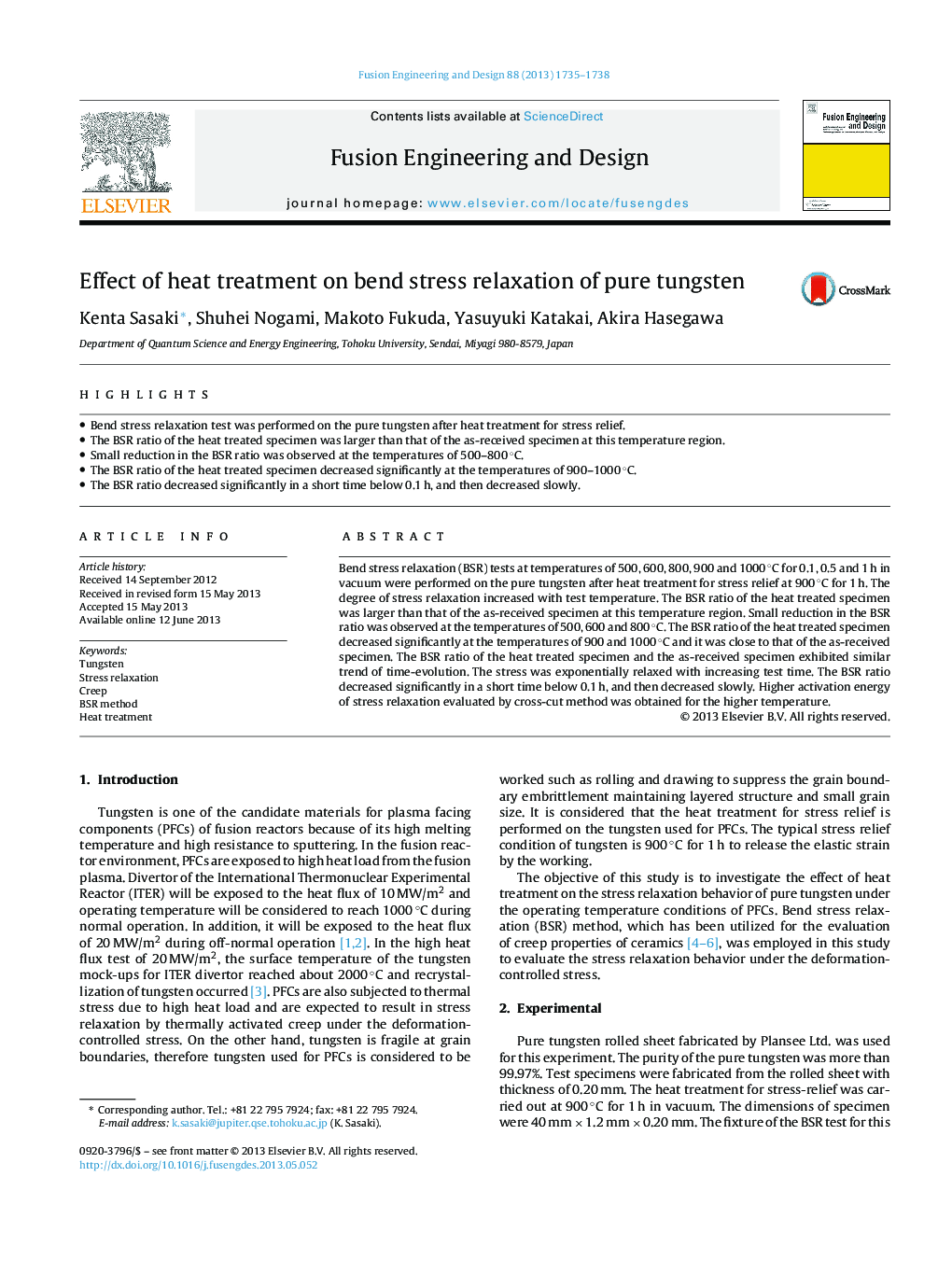| Article ID | Journal | Published Year | Pages | File Type |
|---|---|---|---|---|
| 6746413 | Fusion Engineering and Design | 2013 | 4 Pages |
Abstract
Bend stress relaxation (BSR) tests at temperatures of 500, 600, 800, 900 and 1000 °C for 0.1, 0.5 and 1 h in vacuum were performed on the pure tungsten after heat treatment for stress relief at 900 °C for 1 h. The degree of stress relaxation increased with test temperature. The BSR ratio of the heat treated specimen was larger than that of the as-received specimen at this temperature region. Small reduction in the BSR ratio was observed at the temperatures of 500, 600 and 800 °C. The BSR ratio of the heat treated specimen decreased significantly at the temperatures of 900 and 1000 °C and it was close to that of the as-received specimen. The BSR ratio of the heat treated specimen and the as-received specimen exhibited similar trend of time-evolution. The stress was exponentially relaxed with increasing test time. The BSR ratio decreased significantly in a short time below 0.1 h, and then decreased slowly. Higher activation energy of stress relaxation evaluated by cross-cut method was obtained for the higher temperature.
Related Topics
Physical Sciences and Engineering
Energy
Energy Engineering and Power Technology
Authors
Kenta Sasaki, Shuhei Nogami, Makoto Fukuda, Yasuyuki Katakai, Akira Hasegawa,
